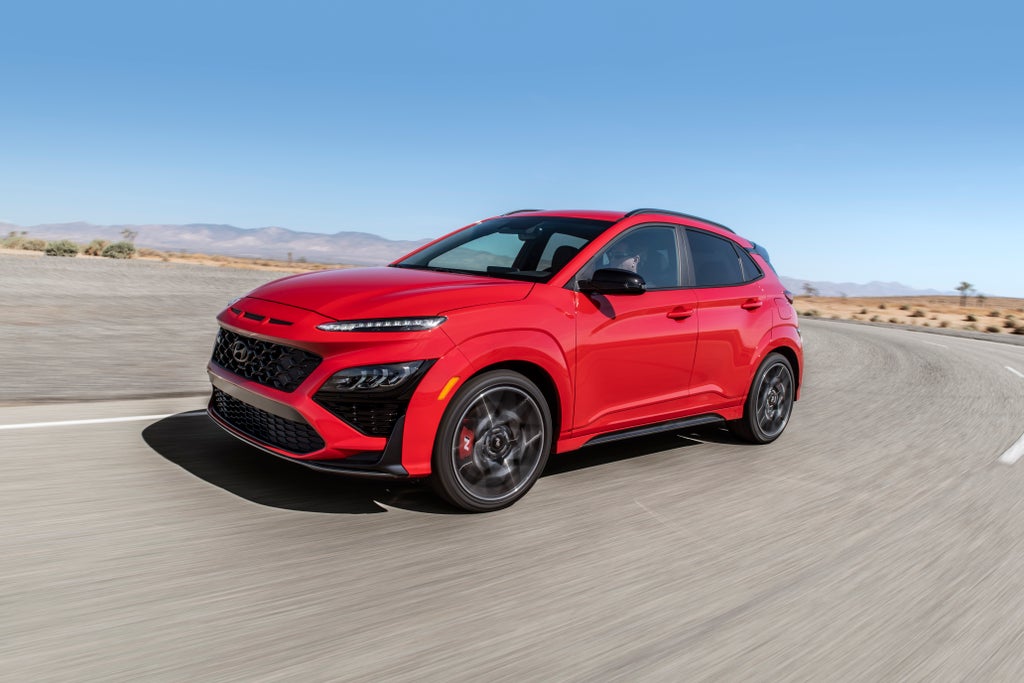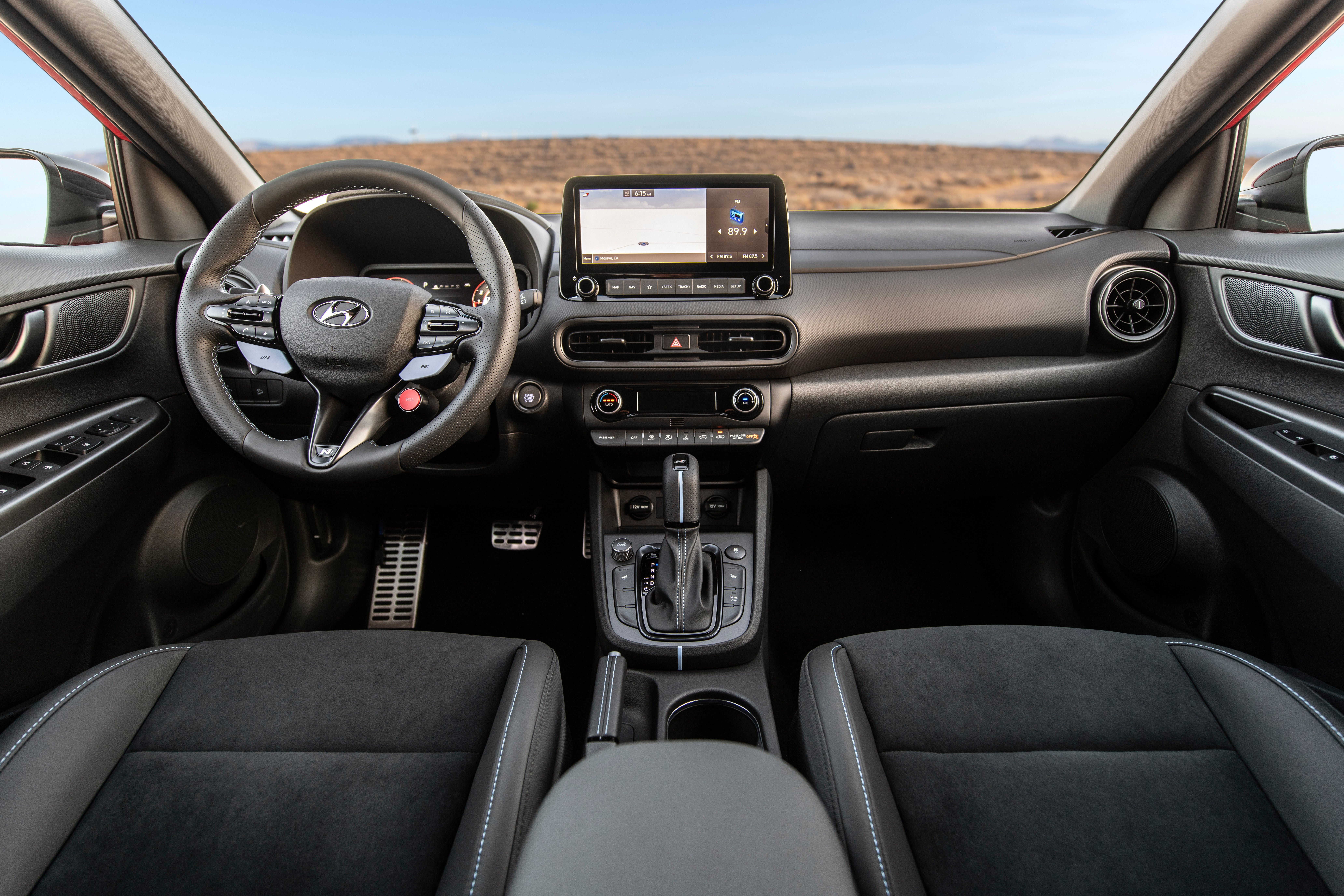
Exhilarating” is the word I’d use to sum up the Hyundai Kona N. There aren’t that many cars that cross my path that I don’t want to get out of, let alone hand back at the end of a few days. So the agony and distress I felt at saying goodbye to the Kona N was unsettling indeed. It’s just a South Korean hot compact SUV, I tell myself. It’s £35,395, for heaven’s sake. No one in the real world has much idea what a Hyundai is, or a Kona – still less what the “N” stands for. Basically, it’s Korean for “GTI”, as in Volkswagen Golf GTI, or, more recently, the less familiar “R” in the Volkswagen Golf R.
Now I can imagine that, for many, the “N” stands for “not interested”, but I feel obliged to mention that, according to Hyundai, it derives from the Namyang district in South Korea – “the birthplace of the N brand” and the location of Hyundai’s global R&D centre – along with the Nurburgring racetrack in Germany, which is home to Hyundai’s technical centre; and the “N” shape is also a representation of a classic chicane, or a tight serpentine turn in the road. As far as I can see, from a brisk run around some country lanes, “N” is for “nuts”.
None of that matters, of course – a rose by any other name and all that. What matters is that this is a car that, at the touch of a little red button on the steering wheel, can transform from a sporty little SUV into something closer to a WRC contender.
Once again, there is a mysterious nomenclature – “NSG”. This, revealing a sense of humour rarely encountered in the automotive industry (which tends to take itself quite seriously), stands for “N grin shift”, which is entirely appropriate. The NSG thingie doesn’t just transform the car, but turns you, the average driver, into a Flying Finn rally contestant. The automatic gearbox holds the revs as you accelerate, while the adaptive suspension makes the car more bouncy but with a harder, tauter feel.
THE SPEC
Hyundai Kona N
Price: £35,395
Engine capacity: 2.0ltr petrol, 4-cyl, 8sp auto
Power output (hp): 276
Top speed (mph): 149
0 to 60 (seconds): 5.5
Fuel economy (mpg): 33
CO2 emissions (WLTP, g/km): 194
It pumps an extra 10 brake horsepower to the four wheels, via an automatic limited-slip differential (so less wheel spin), with the grip gifted by WRC-grade Pirelli P Zero tyres. Even driving down the high street in NSG mode, the car pops and grumbles like some sort of badly customised boy racer, with the dirty secret that it’s actually got state-of-the-automotive-art engineering permeating its entire being.
So it goes on, and on, and on towards the horizon, but with the car doing most of the hard work. It will even tell you when a tricky bend is coming up, and tries to engage in its sportiest mode if it senses you’re in heavy traffic or that there are obstacles nearby. It is as if you were in the hands of petrolhead angels. Highly enjoyable, then, and moderately practical. Its closest rival is the Ford Puma ST, which is also fast and has a better design to it (including a clever deep “mega box” in the boot).

That’s about it really. It’s got a nice tasteful interior, a little understated compared with the extrovert body kit on the outside, and the blend of touch-screen, button and dial controls works better than most. The only flaw, which it shares with other performance models (eg from VW) with dual-shift clutches, is a sometimes disappointing hesitation from rest as the car’s software catches up with your instructions. Apart from that niggle, the Hyundai Kona N is exhilaration in automotive form: it’s what it stands for.







